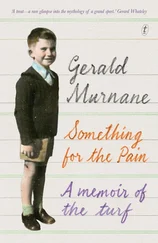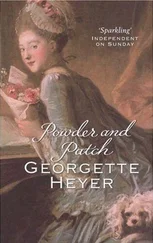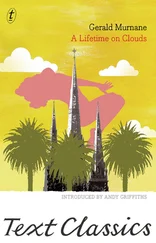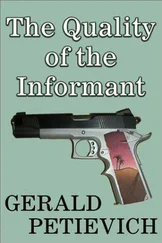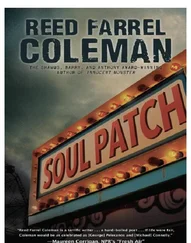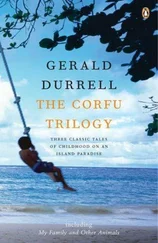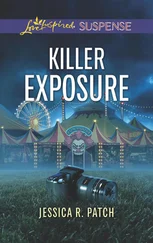Gerald Murnane - Barley Patch
Здесь есть возможность читать онлайн «Gerald Murnane - Barley Patch» весь текст электронной книги совершенно бесплатно (целиком полную версию без сокращений). В некоторых случаях можно слушать аудио, скачать через торрент в формате fb2 и присутствует краткое содержание. Год выпуска: 2011, Издательство: Dalkey Archive Press, Жанр: Современная проза, на английском языке. Описание произведения, (предисловие) а так же отзывы посетителей доступны на портале библиотеки ЛибКат.
- Название:Barley Patch
- Автор:
- Издательство:Dalkey Archive Press
- Жанр:
- Год:2011
- ISBN:нет данных
- Рейтинг книги:5 / 5. Голосов: 1
-
Избранное:Добавить в избранное
- Отзывы:
-
Ваша оценка:
- 100
- 1
- 2
- 3
- 4
- 5
Barley Patch: краткое содержание, описание и аннотация
Предлагаем к чтению аннотацию, описание, краткое содержание или предисловие (зависит от того, что написал сам автор книги «Barley Patch»). Если вы не нашли необходимую информацию о книге — напишите в комментариях, мы постараемся отыскать её.
Barley Patch — читать онлайн бесплатно полную книгу (весь текст) целиком
Ниже представлен текст книги, разбитый по страницам. Система сохранения места последней прочитанной страницы, позволяет с удобством читать онлайн бесплатно книгу «Barley Patch», без необходимости каждый раз заново искать на чём Вы остановились. Поставьте закладку, и сможете в любой момент перейти на страницу, на которой закончили чтение.
Интервал:
Закладка:
At least once during the Sunday afternoon, the women made a pot of tea and then sat around the table to drink it. My aunt would put on the table a plate of cakes for the women to eat with their tea. In those years, a woman such as my aunt would have been ashamed to serve to guests any cakes or biscuits bought from shops. Such a woman devoted at least one half-day each week to baking, as she called it. My aunt would put in front of the other women patty-cakes: simple iced cakes in patty-pans of pleated paper. If she had had more time than usual for baking, she might serve lamingtons or butterfly-cakes: patty-cakes with two semicircular slices cut from the top of each cake, with whipped cream spread over the newly exposed surface, and with the two semicircles pressed into the cream so as to suggest the raised wings of a butterfly.
I saw it only once during the many Sunday afternoons when I would walk often slowly through my aunt’s kitchen, hoping to overhear the deliberations of some of the most powerful persons I knew. I saw it only once, but I assumed that it happened often. I assumed that my aunt, soon after having taken a large bite from one or another cake, would often remove one or another mass of pulped food from behind her inmost teeth by poking an index-finger far into her mouth and then, seemingly, by first scraping the finger along the teeth, then wiping the finger against the tongue, and finally swallowing the food.
At every Sunday tea, after the main course of cold meat and salad, we were served a sweet called a trifle. I never saw a trifle being prepared — the ingredients would always have been placed in a large bowl early in the day and put aside to soak. Children such as myself were served only small portions of trifle, because one of the ingredients was sherry. I might have identified the other ingredients merely by looking at what was on my spoon while I ate, but I always ate my trifle by gulping at it and I always kept my eyes averted from the stuff in my plate or on my spoon. The main ingredient was some kind of cake, but after it had been soaked all day its texture often suggested to me that I had in my mouth such a pulp or mush as my aunt would have removed from her rear teeth whenever she scraped them with a finger.
The aunt mentioned hereabouts could well have afforded to visit a hairdresser whenever she so wished and to have come away with a different hairstyle after each visit. I cannot recall that I ever took note of her hairstyle, but whenever an image of my aunt has appeared in my mind for many years past, that image has been of a certain face beneath what I call an upswept hairstyle: exactly the sort of hairstyle worn by the image of Aunt Bee in my mind whenever I recall my having read Brat Farrar .
In the image that I see of my aunt’s face I can find no detail to explain the sternness and disapproval that seem to emanate from the image. However, I have for long recognised that time has no existence in the image-world. I am therefore able to suppose that my image-aunt, during her wanderings among my image-landscapes, has come upon certain image-evidence from the years during the early 1950s when I masturbated often. That image-evidence would have included image-details of her image-nephew spying on his image-cousins, her image-daughters, during certain image-picnics on image-beaches during the early image-1950s, whenever one or another of the image-cousins leaned so far forward in order to reach for an image-tomato-sandwich or an image-patty-cake that the upper parts of her image-breasts were exposed or whenever she reached down to pick up some image-object from the image-sand and so caused the lower part of her image-bathing-costume to be stretched upwards, thereby exposing two image-rolls of image-flesh at the base of her image-buttocks. I am even able to suppose that my image-aunt may have come upon one or another image of a woman with an upswept image-hairstyle and an expression on her image-face of image-tolerance or even image-sympathy for the image-nephew and his image-spying, although I have never been able to suppose that my image-aunt would not have been sternly disapproving of such an image-image.
Not long before I read Brat Farrar , or it may have been not long afterwards, I read in The Australian Journal one after another instalment of the novel The Glass Spear , by Sidney Hobson Courtier. I knew about the author only that he was an Australian whose previous published works had been short stories set in New Guinea during the Second World War. (During the late 1950s, when I had decided on a career as a teacher in a State secondary school who would write poetry and perhaps short stories in secret at weekends or during the long summer holidays, I learned that Sidney Hobson Courtier was a senior teacher in a State primary school about five kilometres from the south-eastern suburb of Melbourne where I then lived. I was prepared to write always in secret and to use a pen-name because I knew that teachers employed by the State were forbidden to undertake paid employment outside their working hours. Sidney Hobson Courtier made no secret of his being a writer. He had got special permission from the Education Department to write in his free time after he had presented the Department with a medical certificate stating that he needed to write in order to preserve his health. During the early 1960s, when I was teaching in a primary school and writing poetry and short stories in secret in a south-eastern suburb of Melbourne, my head-teacher had been a colleague of the man he referred to as Sid Courtier. I never questioned my head-teacher about the author of The Glass Spear , partly because I was afraid of revealing that I was a secret writer and partly because I preferred not to learn that the author was other than I had surmised during my reading of his book.) While I read the early instalments of The Glass Spear , I surmised that the author was a person I might have confided in: a person who might have listened with interest while I explained that I read books of fiction in order to see landscapes in my mind and to meet up with young female personages in my mind. While I read the later instalments, I read also in order to learn how the plot, so to call it, would unfold and what would happen to the characters, so to call them. But my interest in these matters was only a passing interest: I was anxious to have done with them so that I could turn my attention again to what I considered the true subject-matter of the book.
If I could have met up with the author of The Glass Spear in the house where I saw him as living — in the sprawling house with the long return verandahs looking across park-like countryside towards a distant road somewhere in the western half of Victoria — I would have complained politely to him that his sort of book always came to an end too soon after the chief events, so to call them, had taken place: after the murders had been solved and the lovers had become engaged to be married. I might even have dared to tell Sidney Hobson Courtier, while we sat in a shaded corner of his verandah, that the chief fault of books such as The Glass Spear was that they came to an end when they might have gone on for as long, or longer, than I could have read them. I could not reasonably have asked of any author that he or she should write a book so long that I could never read to the end of it, but I might have dared to suggest to Sidney Hobson Courtier that he might have written as the ending of his book at least one more chapter like the early chapters so that my last experiences as a reader of The Glass Spear could have been sights-in-my-mind of room after room in a sprawling mansion surrounded by grassy countryside, or feelings such as I might have felt if I had been one of the persons who was to go on living in that mansion for long after the book had come to an end.
Читать дальшеИнтервал:
Закладка:
Похожие книги на «Barley Patch»
Представляем Вашему вниманию похожие книги на «Barley Patch» списком для выбора. Мы отобрали схожую по названию и смыслу литературу в надежде предоставить читателям больше вариантов отыскать новые, интересные, ещё непрочитанные произведения.
Обсуждение, отзывы о книге «Barley Patch» и просто собственные мнения читателей. Оставьте ваши комментарии, напишите, что Вы думаете о произведении, его смысле или главных героях. Укажите что конкретно понравилось, а что нет, и почему Вы так считаете.


